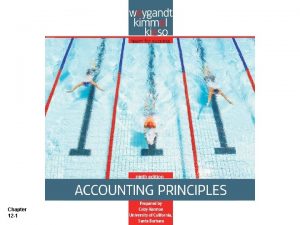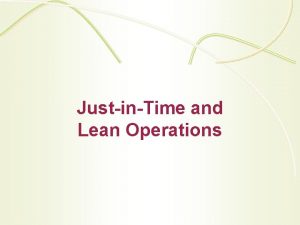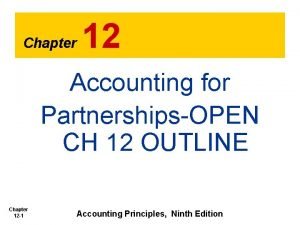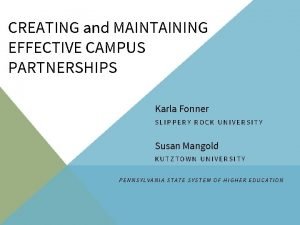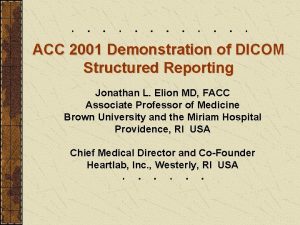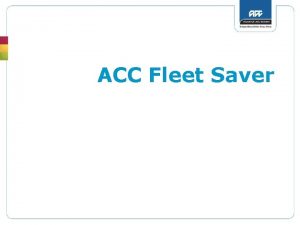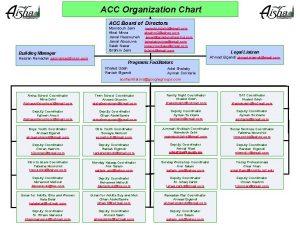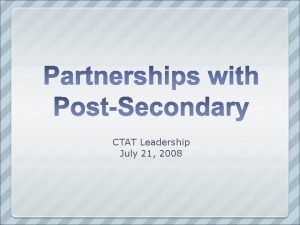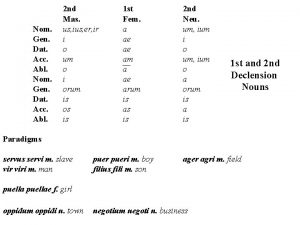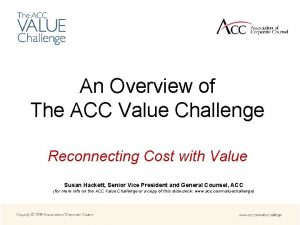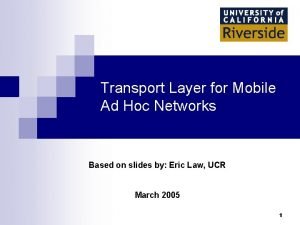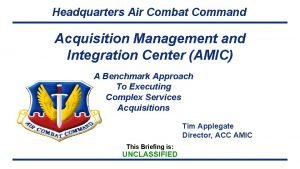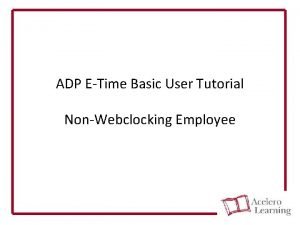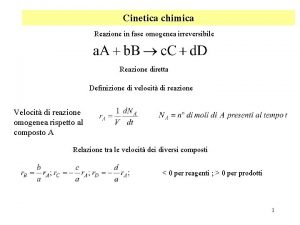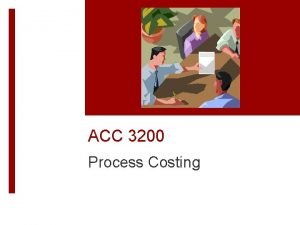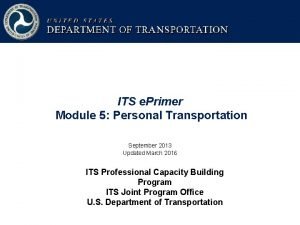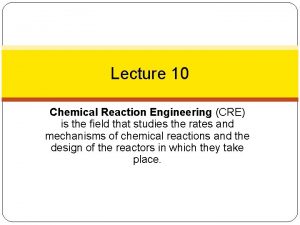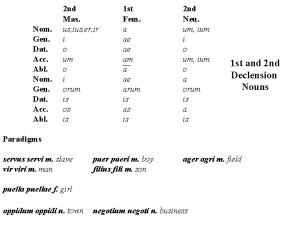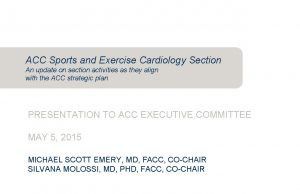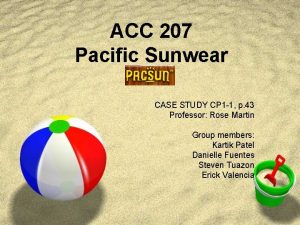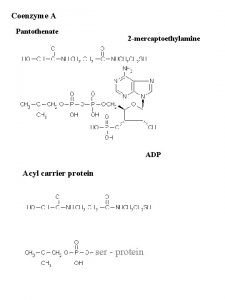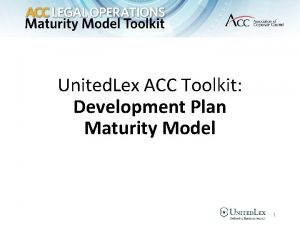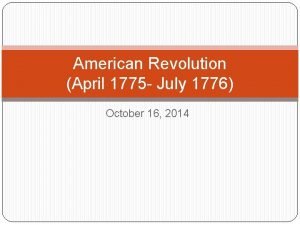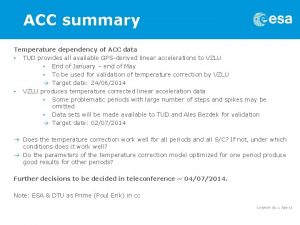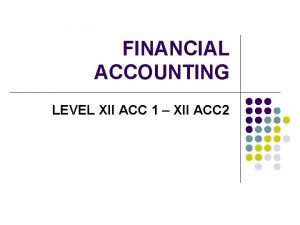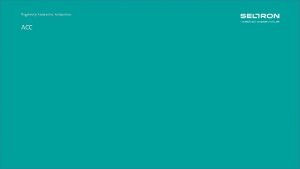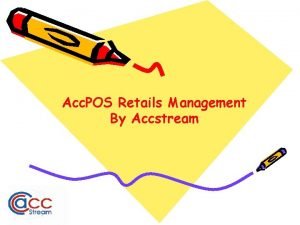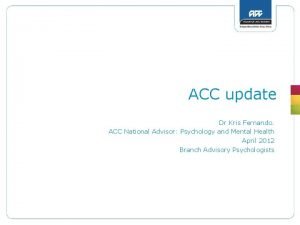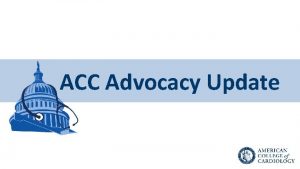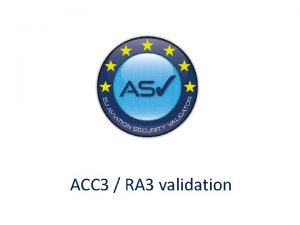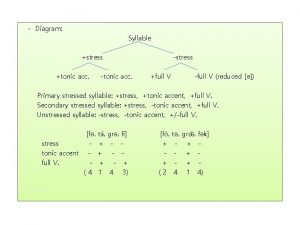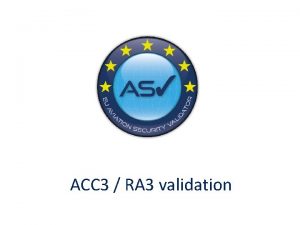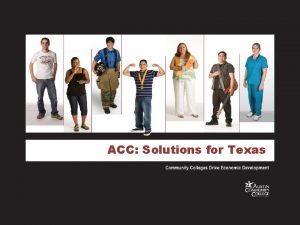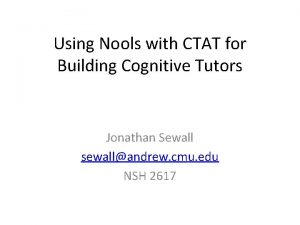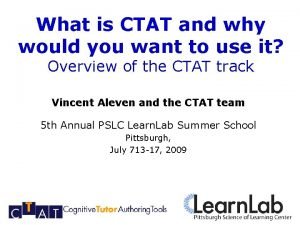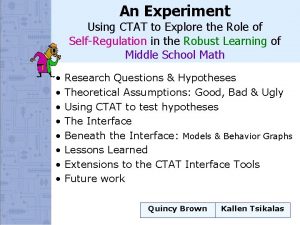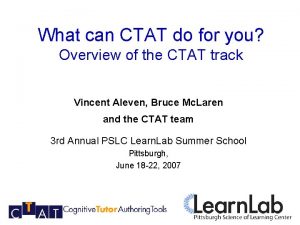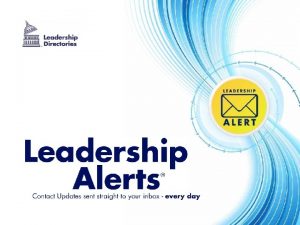CTAT Leadership July 21 2008 ACC Partnerships with













































- Slides: 45

CTAT Leadership July 21, 2008

ACC Partnerships with School Districts Closing the Gaps Early College Start ACC Summer Programs for Students College Connection Mobile Go Center Early College High School P-16 College Readiness Initiative

Texas Higher Education Coordinating Board’s Strategic Plan “Closing the Gaps” Overview

Closing the Gaps warns that if more Texans do not receive college degrees by 2030, the State could lose up to $40 billion in annual household income. The goal is to increase student enrollment in higher education by 630, 000 by 2015. Most students will elect to start at a community college. Austin Community College District expects 15, 000 additional students by 2015. Source: http: //www. thecb. state. tx. us/Closingthe. Gaps/ctgtargets_pdf. cfm? Goal=1

Why Do Community Colleges and School Districts Need to Partner? Our constituencies overlap (parents, students, business communities) We have a common interest in raising educational achievement levels • Closing the Gaps applies to all of us • Economic development depends on educated trained workforce We have similar challenges • Funding • Accountability We are stronger when we work together

• • • Dual Credit Concurrent Enrollment Tech Prep

Early College Start Umbrella concept for ways students can obtain free/low-cost college credit while in high school • Dual credit • Co-enrollment • Tech Prep/Credit-in-escrow Pre-enrollment school campus ACC services delivered at high outreach program

How ECS Works Dual Credit/Coenrollment Students: Demonstrate college-readiness via state-approved tests Meet all academic skills and college course prerequisites Follow the college process for enrollment – services brought to high school campuses Register for ACC courses

How ECS Works Dual Credit/Coenrollment ACC waives tuition and fees • for in-district students • classes taught on high school campuses; $40 per-course fee for out-ofdistrict Students transfer credit • back to high school • use at ACC toward degree/certificate • forward to 4 -year institution

How ECS Works Credit-in-Escrow Students: Enroll for high school classes articulated to college courses Complete with a “B” or better Upon graduation, apply at ACC CATEMA system indicates to student that they have credit to claim ACC applies credit-in-escrow to student’s college transcript

Benefits of ECS Makes college accessible and affordable Supports Creates school a college-going culture in high Increases Creates “Closing the Gaps” state goal college-going rate enrollments for college programs familiarity with merits and value of community college

Student Benefits Provides free/low-cost college experience Fulfills advanced measures for Texas’ Distinguished Achievement Plan Enhances Satisfies seamless transition to college high school graduation requirement and earns college credit (dual credit)

Student Benefits Allows completion of college/core curriculum/general education transfer courses Allows CATEMA* statewide registration of Tech Prep credits Provides access to courses not available in high school (e. g. Japanese, Russian, photography) *Career and Technology Education Management application (system to enter, display, update, report data)

ECS Student Success ECS students have better success indicators than traditional students: • Higher mean GPA • Higher rate of retention

School District Benefits Offers large range of college-level opportunities Offers increased “menu” options of ECS college credit and AP Offers college-level programs that students not considering AP can access Offers classes not available in high school curriculum

School District Benefits Provides alternative to “wasted” senior year perception/criticism Reduces high school personnel units as more students take college classes Offers needs Is potential to satisfy 4 x 4 convenient—ACC will offer classes during school day on high school campus

Advantages of ECS Students gain a true college experience • college academic content, • typical college semester format (rather than over an entire academic year) • exposed to college professors who meet SACS standards Students establish a college transcript • credit in-hand upon successfully completing the college course • no additional testing needed

Advantages of ECS Ease of transfer of college credit • transfers seamlessly to public institutions in Texas • transfers easily to Texas private institutions and out-of-state public and private institutions Maturing experience for students • follow college enrollment process • attend new student orientation • learn the mechanics of going to college and college survival skills


Summer 2008 Pre-Collegiate Programs Summer Bridge Programs Writing Reading Mathematics

Summer 2008 Pre-Collegiate Programs Career exploration Riverside and Eastview Campuses 4 -7 th graders Automotive Technology Science and Math Building and Carpentry Health Sciences Forensic Science Creative and Analytical Writing Robotics and Nano-Technologies Sports Peer Mediation

Summer 2008 Pre-Collegiate Programs Youth Camps 100+ Camps Ages 5 and above www. austincc. edu/camp Theater Ballroom Dancing Computer Game Development Web Design Medical Terminology Photoshop SAT Test Prep


College Connection Program Many high school students find the college enrollment process intimidating. Austin Community College District provides handson, one-on-one support to assist every senior through each step of the college admissions process.

College Connection Program During is free to the school districts. graduation ceremonies, high school graduating seniors receive acceptance letters to Austin Community College District.

College Connection Growth Over 4 years: 1 school district to 24 school districts 2 high schools to 55 high schools 400 students to 16, 466+ students


ACC’s Two Mobile Go Centers MGC #1 Length, 34 Feet Air-Conditioned 14 Computer Stations MGC #2 Length, 42 Feet Air-Conditioned 16 Computer Stations Equipped with: Printers Scanner Copier Satellite Internet

ACC’s Mobile Go Centers Virtual one-stop, college-information facility College catalog Schedule information College applications FAFSA Other Staffed by ACC personnel

ACC’s Mobile Go Centers Support College Connection program activities Enable ACC to reach individuals where they live, work, and/or attend school Festivals Sports Events Supermarkets Shopping Malls Schools Other www. austincc. edu/go


Early College High Schools/ Middle Colleges Goal • Blend high school and college • small school concept • secondary and postsecondary partners take joint responsibility for students • Curriculum is carefully designed so that students can earn a high school diploma while earning college credit

Early College High Schools/ Middle Colleges Key Characteristics • Engages students in college-level course work • Ensures that students graduate with a high school diploma and an associate degree or 2 years of transferable college credit

Early College High Schools/ Middle Colleges • Provides access to college, important to economically disadvantaged students • Assumes that all students will complete a postsecondary credential • Often targets students who are underrepresented in higher education

Early College High Schools Academically rigorous classes College classes as early as Grade 10 Grade 9 and 10 classes are taught by school district teachers Provides guidance and coaching from high school advisors through the first 2 years of college

Middle Colleges • Close links with Tech Prep programs • Flexible schedule allows students to work • High school diploma comes with college degree • Provides alternative to traditional high school programs

Early College High Schools/ Middle Colleges Gates Foundation Support • Requirements for dedicated space on college campus • Dedicated faculty • At-risk students, dropout recovery • Funding mechanism, usually ADA (grant funding is for planning) • Challenges for ACC

ACC’s Model Development How does ACC’s model differ? • Works with available college resources • Focuses on completion of core curriculum • Works within the tuition waiver allowed by ACC policy

ACC’s Model Development Academic year planning • Can be started by any school in summer or fall with sufficient enrollment • Timing and sequence of courses to make sense for rising juniors and seniors Hybrid faculty • Transportation and facility use

ACC’s Model Development Flexibility • Cohort approach Application process Parent involvement • Multiple points of entry Juniors and/or seniors • During school year only Students can earn up to a year of college credit

ACC’s Model Development Flexibility • Adding summer courses allows students to complete the core curriculum the summer following graduation

Working Models Lockhart High School Crockett College Academy • Austin ISD


P-16 Standards and Courses College Readiness Standards Approved January 2008 Approved standards can be viewed at: http: //www. thecb. state. tx. us/collegereadiness/TCRS. cfm Texas College Readiness Project Colleges submit reference course syllabi/materials Finalized May 2008

www. austincc. edu/isd/ctat/072108 Presentation. ppt
 2008 2008
2008 2008 Word partnerships examples
Word partnerships examples Public partnerships my account registration
Public partnerships my account registration Product development partnerships
Product development partnerships Epsrc prosperity partnerships
Epsrc prosperity partnerships Accounting for partnerships chapter 12 solutions
Accounting for partnerships chapter 12 solutions Jit scheduling tactics
Jit scheduling tactics Chapter 12 accounting for partnerships answers
Chapter 12 accounting for partnerships answers Accenture development partners
Accenture development partners Maintaining effective partnerships
Maintaining effective partnerships Acc
Acc Insuficiencia cardiaca clasificacion nyha
Insuficiencia cardiaca clasificacion nyha Acc structured reporting
Acc structured reporting Acc structured reporting
Acc structured reporting Fleet saver
Fleet saver Acc board
Acc board Control acc
Control acc Catema acc
Catema acc Nom, gen, dat, acc, abl meaning
Nom, gen, dat, acc, abl meaning Acc value challenge
Acc value challenge Control acc
Control acc Nom gen
Nom gen Acc amic
Acc amic Acc etime
Acc etime In-out+gen=acc
In-out+gen=acc Management accounts meaning
Management accounts meaning Acc 3200
Acc 3200 Control acc
Control acc Ib dt
Ib dt Nom gen dat acc abl
Nom gen dat acc abl Subgenual acc
Subgenual acc Acc shared memory
Acc shared memory Acc sports cardiology
Acc sports cardiology Acc 207
Acc 207 Acc etime
Acc etime Acc maturity model
Acc maturity model Transformational leader and transactional leader
Transformational leader and transactional leader What is adaptive leadership style
What is adaptive leadership style Capable but cautious performer
Capable but cautious performer July 16 1776
July 16 1776 Recognizing imagery
Recognizing imagery Ctdssmap payment schedule july 2021
Ctdssmap payment schedule july 2021 July 30 2009 nasa
July 30 2009 nasa Ruth bruno
Ruth bruno Malaga in july
Malaga in july July 2 1937 amelia earhart
July 2 1937 amelia earhart





